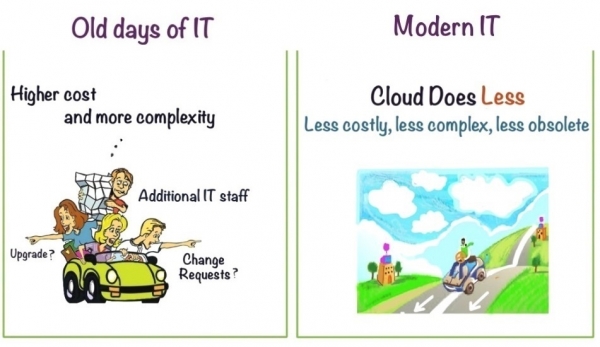


Many years ago, the IT leaders would sit down in conference rooms, prioritize projects, request Capex, discuss budgets and finally hire an army of developers to develop custom solutions that would take years to develop before moving on to the next thing. By the time projects were finished, business needs were already changed and yet another complex IT project was needed to keep up with change.
The rate of outside change has been much faster than our ability to respond. At this pace, we will soon become obsolete.
Today, the outside marketplace is dictating the inner dynamics we need to build up within our organizations. The old way of doing things is slowing us down and hurting our resources and energy. It is vital for the survival and relevance of companies to quickly find the dynamics to respond to the outside change i.e. new regulations, new product lines, new competition, new customer segments, retention of younger talent and the list goes on.
In a recent survey of 2,000 CIOs, a Gartner report noted “Cloud Computing” was among the top 3 priorities for CIOs- this included software as a service (SaaS), infrastructure as a service (IaaS), and platform as a service (PaaS).
Let me first define (in simple English) what cloud is. Cloud is a deployment model that
Today, technology innovation has become the new competitive force for organizations. Technology innovation allows us to reduce cost by decreasing the inefficiencies and increase revenue by adding new product features. T
he early adopters of technology innovation have a ”
HIGHER” influence within the marketplace whereas the late movers ”
LAG” behind their competitors.
Let me give you an example.
I recently saw a TV ad during the FIFA world cup. Forrester research named CIBC bank #1 in mobile banking and its being highlighted as their competitive power to the FIFA viewers.
“The research used mobile banking functionality and scored each of the five Canadian banks with an average of 66 out of 100, which in turn reveals the differences seen in the banks offerings across 35 criteria and seven categories, including: range of touch points, enrolment and login, account and money management, transactional features, service features, cross-channel, and marketing and sales. In the top spot, CIBC offers best-in-class features such as extensive mobile alerts, customized layout options on its iPhone app home screen, money management visualizations on its iPad app, and clear guidance to other channels like phone and email.”
Technology enables organizations to understand their customer behaviours, provide them with a better quality service and stay competitive. Technology makes us “proactive” rather than being “reactive”. Nevertheless, the long & complex approaches of IT projects are hindering the technology enablement. And that’s where Cloud is immensely valuable. Cloud enables faster technology enablement by delivering the instant needs of business straight from the cloud and helps us keep up with change.
First, CIOs need to dedicate their time to understand the value that cloud brings to their portfolio. Many of them are still tied up with their day-to-day IT priorities with hugely complex deployments and upgrades. Cloud computing just becomes another task on their whiteboards to be addressed (in future) with their already stretched resources.
Second, CIOs need to define a plan and do a few pilot projects . They can start with the less risky and known business cases for cloud such as sales, operations etc. Finally, IT needs a holistic Cloud Strategy. This means taking a methodical look into the details of existing systems to start removing those redundancies that have been causing enormous hardware complexity. Using Hybrid-cloud model ,companies can begin to shift the standard & vanilla projects to cloud while some of the highly custom projects can stay on-premise.
Result— As companies start “adding cloud” in their IT landscape, they will begin to see a decrease in their dependency on IT resources and eventually catch-up with the speed of “outside change”.
SAP provides an incredible portfolio of flexible, secure, scalable and easy to integrate cloud based solutions giving ultimate “freedom of choice” to customers according to their specific situations. SAP’s wide and deep portfolio provides a starting point for each one of us to get going on cloud journey this year. Furthermore, the new hardware innovations allow you to store large sets of data in a much smaller footprint. As a result, adopting Cloud makes HANA less costly for customers.
So here is my message to IT. Get with the times and fuel up with SAP cloud.
Curious to learn more about SAP cloud. Check out my blog SAP’s cloud portfolio.